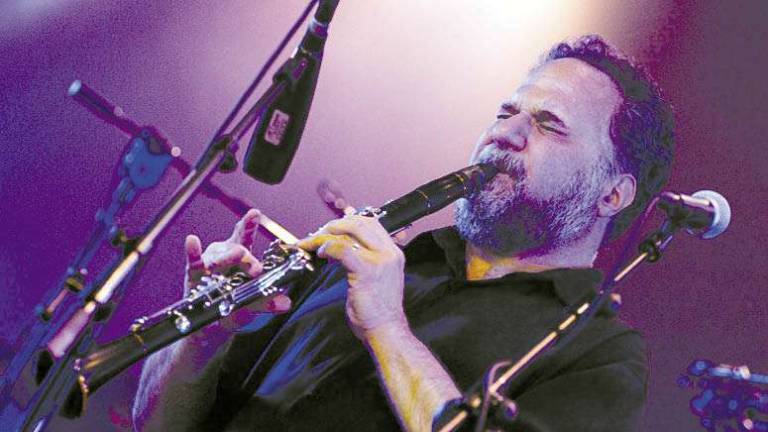Klezmer in the Ghetto

Krakauer expands the klezmer's repertoire
Growing up in New York City, clarinetist David Krakauer drew his inspiration from classical, jazz, and rock music. Twenty-five years ago, he got hooked on an "identity exploration thing" and began to study klezmer, the music of his Jewish Eastern European forebears. Today he's known around the world not only for his mastery of klezmer clarinet but also for injecting hip-hop and rap into the klezmer repertoire. Thanks to Carnegie Hall's neighborhood concerts and the support of Gale Brewer, David Krakauer and his Acoustic Klezmer Quartet delighted the audience with their twentieth-century-New-York renditions of standard klezmer tunes at John Jay College's Gerald W. Lynch Theater on October 6.
"Foreign" influences like hip-hop aren't foreign to klezmer music. While klezmer originated in the Jewish ghettos of Eastern Europe, especially the Moldavian region of Romania, and was based primarily on Jewish liturgy and melodies employed for ecstatic communion with God, it also drew heavily from the secular songs and popular dance music of the surrounding cultures-Slavonic, Greek, Turkish, and, especially, Rom (Gypsy). In the US, it picked up elements of jazz and began to be heard not only at Jewish celebrations but in concert halls as well.
Klezmer is best defined by the Yiddish phrase Lakhn mit trern (laughing with tears); klezmer musicians use special effects to create sobbing sounds, laments, and complaints. David Krakauer's brand of klezmer, forged in New York City rather than the Pale of Settlement, is more "happy ghetto" than "shtetl wail," as if he's got all of the fun of Judaism and none of the pain, his clarinet his means of bursting through the universe with music pouring from his lips. The October 6 program included a medley that blended a klezmer Terkesh rhythm with a Sidney Bechet tune (Krakauer calls Bechet "my teacher, whom I never met") and Krakauer's version of a theme written by the extraordinary accordonist Emil Kroitor and brought to America from Moldavia in the 1990s by German Goldenstein, a man who had "eight hundred melodies in his head."
Throughout history, the Jewish tradition has renewed itself wherever it has settled-from Babylon to Cordoba to Bessarabia to New York-whether through exile or free choice. By means of his "identity exploration thing," David Krakauer has come to exemplify this spirit of reaffirmation, wherever it will take him and his clarinet.